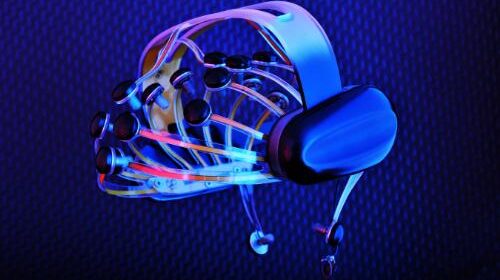Global Wireless Brain Sensors Market to Reach $362.0 Million by 2030
The global wireless brain sensors market is projected to reach $362.0 million by 2030,according to CRI’s new report. The study also highlights that the market is set to witness a CAGR of 10.53% between 2021 and 2030.
https://www.cri-report.com/product/global-wireless-brain-sensors-market-analysis-and-forecast-2021-30/
The comprehensive study of the global wireless brain sensors market extensively covers the following:
• Market numbers on application and end user segments and respective sub-divisions that are influencing the market
• More than 150 products present in the market
• Market share analysis for global wireless brain sensors market
• Detailed global and regional market share analysis, including the scrutiny of 15 countries
Besides these parameters, the study also encompasses the market growth drivers, opportunities, market restraining factors, competition mapping, segmental analysis, and COVID-19 impact on the market.
This report indicates that the global wireless brain sensors market has witnessed significant growth in the past few decades, owing to increasing concerns regarding different neurological disorders among all age groups. Furthermore, rising awareness about the beneficial effects of minimally invasive and non-invasive devices, in addition to the launch of products for a wide range of applications, are some of the prominent factors that are expected to propel the growth of the wireless brain sensors market in the upcoming years.
The study highlights the various emerging opportunities, such as technological advancements in wireless brain sensors and regional expansion and increasing adoption of wireless brain sensors in emerging economies.
Additionally, the market intelligence report throws a spotlight on the funding scenario, supply chain, regulatory landscape, patent scenario, and product pipeline for the global wireless brain sensors market.
To gain a holistic view of the market, data from different segments of the market has been analyzed minutely. These segments include application, end user, and region.
The application segment of the global market includes analysis of different types of applications such as sleep disorders, neurophysiology, brain-computer interface, cognitive neuroscience, neuromarketing, and others.
To emphasize the impact of COVID-19 on the global wireless brain sensors market, “Owing to the COVID-19 pandemic, the wireless brain sensor market saw a moderate decline in 2020. Delayed product launches due to the global shutdown of various procedures and declined sales of wireless brain sensor products are the major driving factors for the decline in 2020. However, the market is anticipated to normalize from 2021 and is anticipated to reach up to $362.0 million by 2030, witnessing a CAGR of 10.53% during the forecast period 2021-2030 as companies have the opportunity to launch their home-based wireless EEG devices, which keeps the patients out of the hospitals.”
Key insights are drawn from in-depth interviews with the key opinion leaders of leading companies, market participants, and vendors. The key players profiled in the report include Compumedics Limited, Wearable Sensing, Medtronic Plc, Natus Medical Incorporated, Brain Scientific, Inc, and Nihon Kohden Corporation, EMOTIV, Advanced Brain Monitoring, Inc, Brain Products GmbH, NeuroSky, Neuroelectrics, Cadwell Industries, Inc, Jordan Neuroscience, Inc, BrainScope Company, Inc, and Muse, among others.
The study also offers strategic recommendations that can help organizations in tracking various products, trends, and technologies that are changing the dynamics of the market.
Who should buy this report?
• Wireless brain sensor manufacturers (emerging and established) to gain a holistic view about the market potential of various devices and software and the developing economies for business expansions
• Established healthcare companies that are integrating AI in their research and development activities (R&D) and have completed a synergistic activity for entering the market
• Established technology companies to gain insights about the market potential, market entry strategies, new technologies in the market, and key competitors
How can market intelligence on wireless brain sensors add value to an organization’s decision-making process?
• Aid in product development
• Aid in understanding the funding scenario of the market
• Aid in understanding the regulatory scenario of the market in different regions
• Aid in understanding the patent trend of the market
• Help in targeting a segment for launching a new product
• Aid in understanding the market potential of different technologies
• Aid in understanding the end-user requirement
• Support in analyzing the market opportunities
• Insights on the key companies in the market
Insightful Questions Covered to Enable Companies to take Strategic Decisions
• How has COVID-19 impacted the global wireless brain sensors market?
• What are the key regulations for the development, commercialization, and adoption of wireless brain sensors?
• Which are the leading players that currently hold significant dominance in the global wireless brain sensors market?
• What are the key strategies incorporated by the players of the global wireless brain sensors market to sustain the competition and retain their supremacy?
• What is the patent landscape of the wireless brain sensors market?
• What are the key technological developments on which the current industry leaders are spending their major share of research and development (R&D) investment?
• What is the current market potential of wireless brain sensors, and what factors decide the growth potential of wireless brain sensors for the forecast period?
• What is the current revenue contribution of different products, and how would it evolve in the forecast period?
• Which application contributes to the highest CAGR (%) in the global wireless brain sensors market?
• How does the end-user perception impact the growth of the global wireless brain sensors market?
• Which countries contribute to a major share of the current demand, and which countries hold significant scope for expansion for business activities by players of the global wireless brain sensors market?
• What are the drivers, restraints, and opportunities in the global wireless brain sensors market?

